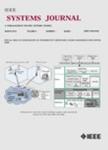版权所有:内蒙古大学图书馆 技术提供:维普资讯• 智图
内蒙古自治区呼和浩特市赛罕区大学西街235号 邮编: 010021

作者机构:Natl Taiwan Univ Dept Elect Engn Taipei 10617 Taiwan St Johns Univ Dept Elect Engn Taipei 25135 Taiwan
出 版 物:《IEEE SYSTEMS JOURNAL》 (IEEE Syst. J.)
年 卷 期:2012年第6卷第3期
页 面:368-377页
核心收录:
学科分类:0810[工学-信息与通信工程] 1201[管理学-管理科学与工程(可授管理学、工学学位)] 0808[工学-电气工程] 08[工学] 0812[工学-计算机科学与技术(可授工学、理学学位)]
基 金:National Science Council Taiwan [NSC 98-2221-E-002-160-MY3 NSC 99-2623-E-002-007-D NSC 98-2218-E-002-008]
主 题:Embedded coding rate and quality control real-time video transmission region of interest surveillance system
摘 要:The visual information of a surveillance system should provide extended and just-in-time perception in monitored environments. However, delivering visual information of surveillance from nonstationary providers, such as mobile cameras, to designated end-users over bandwidth-limited networks is a challenging task. In this paper, for transmitting visual objects of interest, an embedded spatial coding approach is proposed to progressively encode the presentation quality of visual objects under receivers bandwidth limitation. First, different levels of importance for the objects of interest are characterized by the standard edge detection algorithm and several designated priorities for these objects are progressively assigned. The spatial coding approach then adopts a wavelet-based image coding algorithm based on the assigned priority of each object of interest. Therefore, each individual receiver can adaptively obtain the best visual information of the most important object under its available bandwidth. The proposed priority assignment and spatial coding mechanism has been extensively tested and analyzed. The experimental results show that, under different bandwidth scenarios and required acceptable signal-quality levels, the end-users can obtain the best visual quality of the important objects of interest. Therefore, the importance of the objects of interest in real-time surveillance video can be properly determined and the required transmission quantity can be effectively allocated.